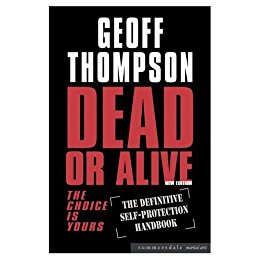All attackers have rituals that they go through just before they make an attack. They use a pre-defined order, a process, by which to attack and this is often referred to as Modus Operandi, which is a Latin term used in American crime. Modus Operandi translates to “method of operating” this is what we call an attack ritual.
There are three main types of attack ritual to be on the look out for and if you understand what these rituals look like, it can be easier to spot an attacker first and then take the necessary evasive action. This is based on the work of Geoff Thompson and is highlighted in his book Dead or Alive which is a brilliant book.
The three rituals are as follows:
- Ambush strategy – this is when an attacker follows you and lays in wait, and strikes using speed coming from behind you. A good example would be from behind the back of a pub. The key to this is the element of surprise. With this attack ritual there will be no dialogue, so don’t expect talking.
- On a personal note, this actually happened to me, and it was the trigger to me taking up personal safety training in the first place. I was attacked on the way home from a night out in a local pub. Some guys were sat on a wall and attacked me from behind. One punched me on the chin and then I got kicked in the head several times. When I dusted myself off and returned home my father asked me what they had said to me and I replied “nothing”. He then asked me what I said to them and I also said “nothing”. The only way to defend against this type of attack is by having better awareness. Something which I have covered in the POLITE model – observation. So the real antidote to the ambush strategy is good observation.
- The talking distance attack – the reason it is called this, is nobody can attack you from shouting range unless they have a gun. The distance is usually less than an arm’s length and dialogue is always involved.
- Passive version – this is when an attacker has an excuse to get close to talk to you. He may ask you the time, directions or simply for some change. Basically they think of an excuse to come up close to you. If they think you are unaware they will attack with some kind of pre-emptive strike i.e punch
- The 3D’s Dialogue, Deception and Distraction – a good attacker will use these to make you think and whilst you are thinking you are off guard.
- Aggressive talking distance attack – this usually begins up to 50 yards away. It is the art of sucker punch which will get around any martial arts training. It starts with eye contact. The second stage is they will put their hand up and say something like “Can I have a word?” That is designed to get you to stop otherwise you would have had a head start. Then they make the approach which will be in a straight line and the speed will depend on how sophisticated the attacker is. An amateur attacker will move quickly which could startle you and put you on guard. If someone comes across in a more controlled manner, they go under the radar and when they are in striking range they will say the same statement again but change the tonality. This time it will be with an aggressive tone “Hey I said I wanted a word with you?” The attacker will then begin hen packing, ballooning and stalking to send an unconscious message that you do you want to mess them. If they see any sign of weakness or their opponent starting to crumble, the attack will continue. However, if they are met with an aggressive response they will probably abort and go and pick on somebody else.
- Passive version – this is when an attacker has an excuse to get close to talk to you. He may ask you the time, directions or simply for some change. Basically they think of an excuse to come up close to you. If they think you are unaware they will attack with some kind of pre-emptive strike i.e punch
- The gentleman’s duel – this doesn’t really happen these days. Most people who are trained for self defence are only really ever prepared for the duel. When one man challenges another to a fist fight.The bad guys these days will tend to use the talking distance attack.
As a final point, Geoff Thompson claims he has won 90% of his fights in the first three secs by using the 3Ds.
Recent Comments